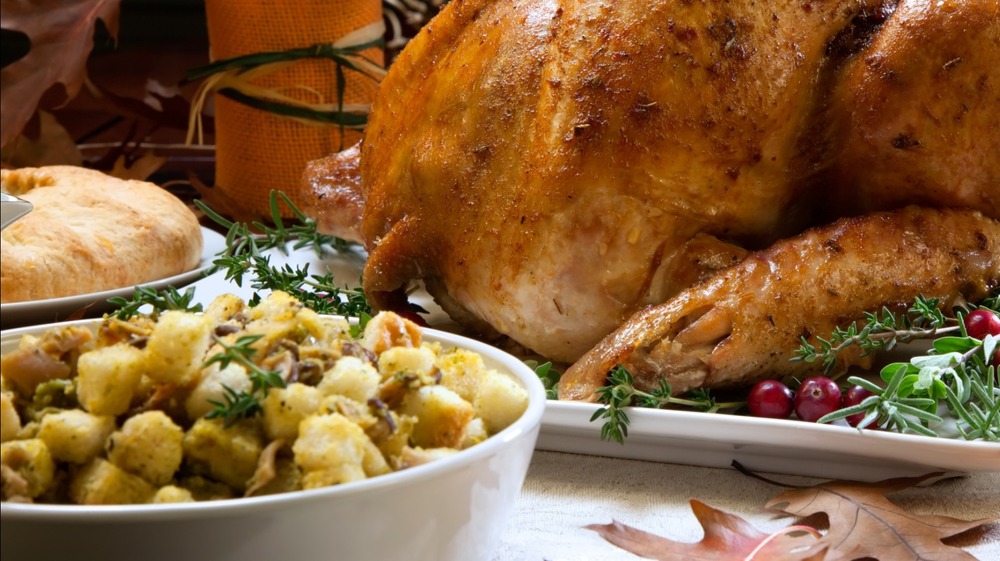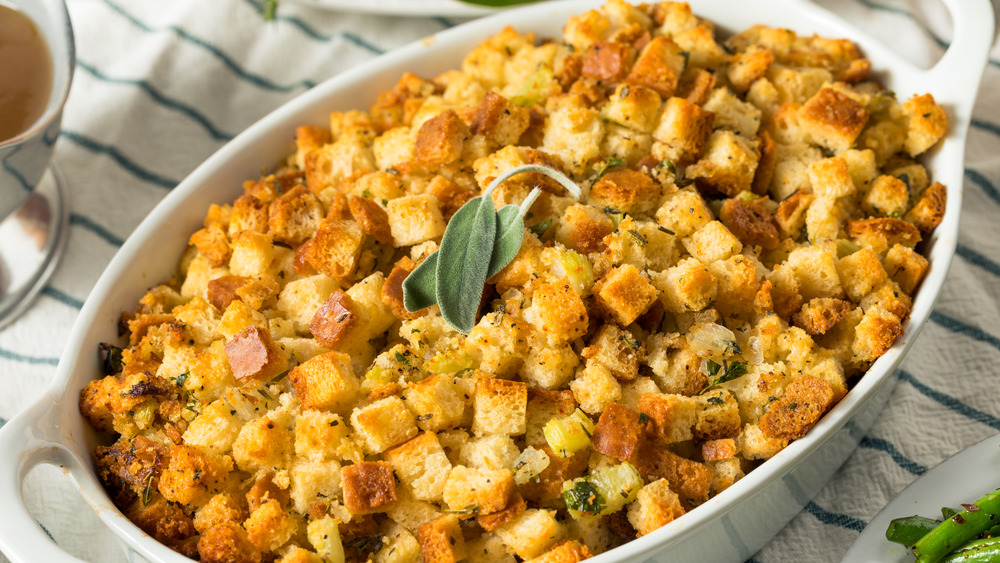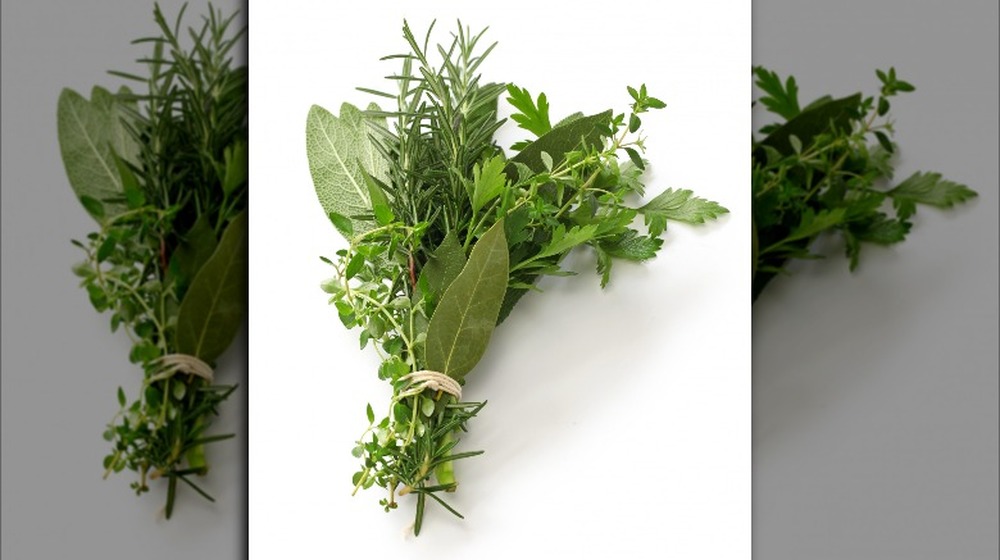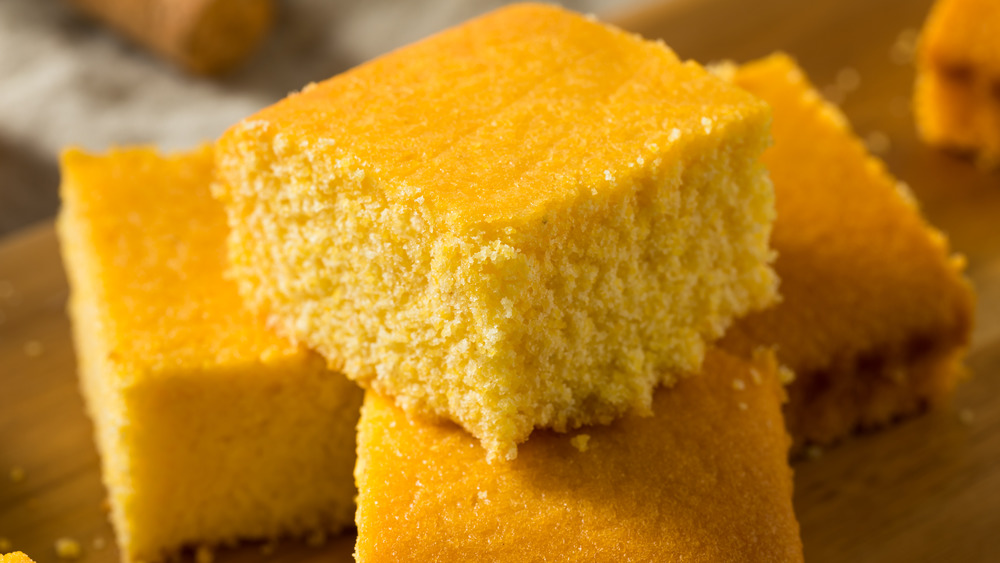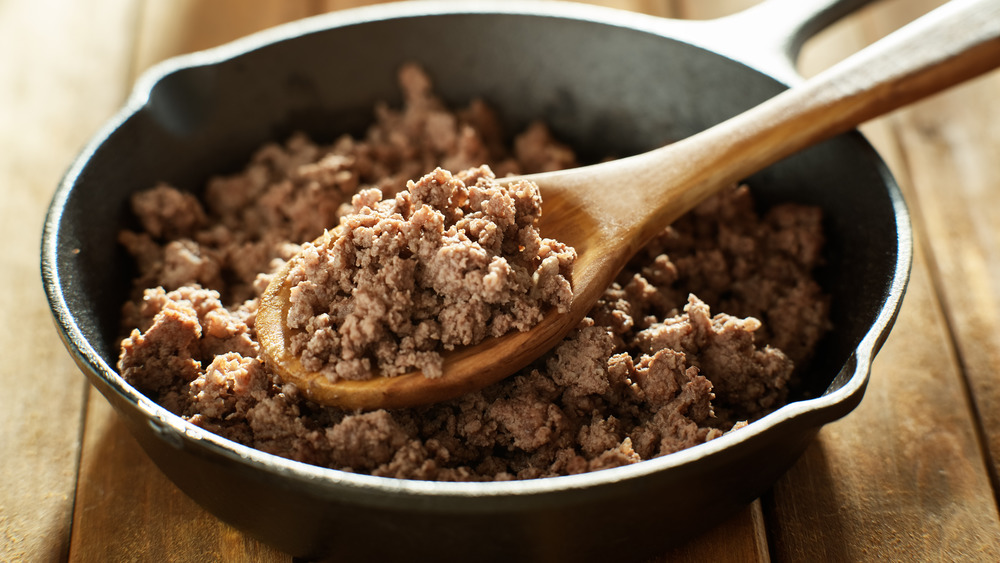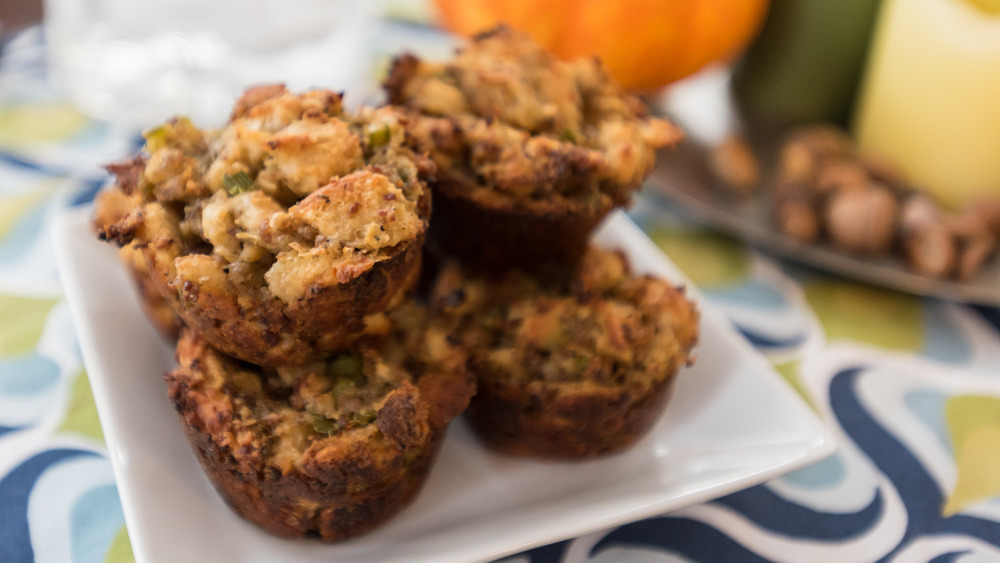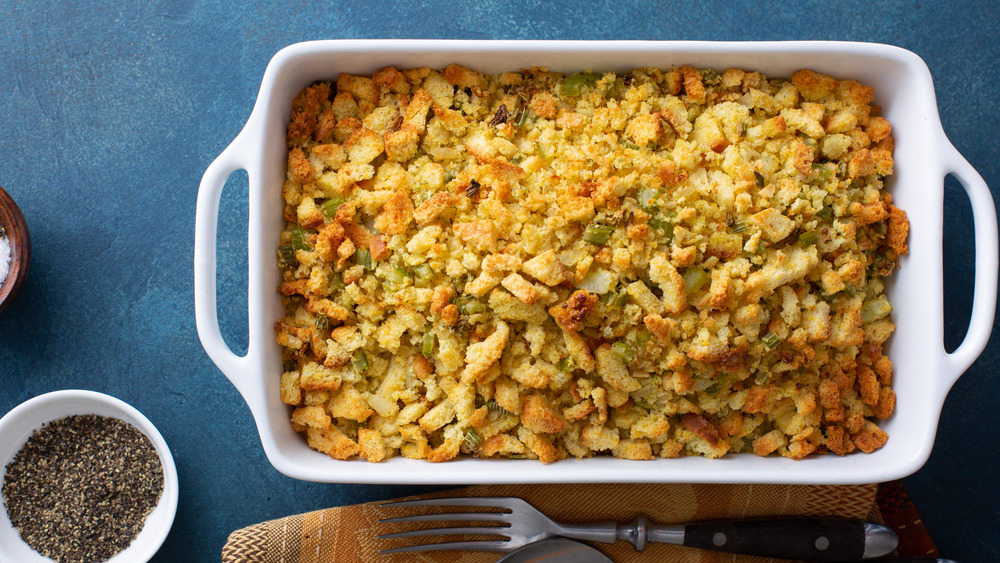The Stuffing Mistake You're Making With Your Turkey
Stuffing and turkey go together like, well, ice cream and sandwiches, even if, as it turns out, we're not actually supposed to stuff the stuffing inside the bird anymore so it should more properly be called "bread dressing" or something to that effect. Whatever you call it, or however you cook it, stuffing is one of everybody's favorite Thanksgiving sides, and it's actually a dish that many wouldn't mind eating at other times of the year, as well. (Milwaukee grocer Rupena's deep-fried stuffing on a stick is a popular offering at the Wisconsin State Fair which, like most state fairs, takes place in the summertime.)
Still, simple as the concept of stuffing may be in theory, it's a dish that's surprisingly easy to screw up. Just in time to rescue your Thanksgiving, though, we got some stuffing-saving advice from Adrienne Cheatham, a chef at the Institute of Culinary Education who was a runner-up on season 15 of Top Chef.
Don't let your stuffing get dry
According to Cheatham, "One common problem with stuffing is that it can be really dry." And nobody wants to choke down dry, crumbly stuffing. In order to avoid this problem, she says you'll need to make sure that your pan has plenty of liquid before you add the cubed bread since "if the mixture looks dry before it's baked, it will be even drier after."
Cheatham says that the choice of liquid is up to you, but suggests heavy cream, stock, beer, wine, or beaten egg. She says that whatever you use to add additional moisture to your stuffing, it "will help you get a custard-like texture inside."
Don't under-season the stuffing
Yet another problem that Cheatham mentions is that of stuffing being under-seasoned. She says this happens when "the ratio of bread to aromatics is too bread-heavy." Her recommendation is that for each cup of cubed bread you use, you should have about 2/3 cup of aromatics (those being fresh herbs), since "otherwise there won't be enough flavor." She does say, however, that if you don't have such quantities of fresh herbs on hand, you can feel free to add some dried ones. As to which herbs work well in this dish, she says "sage tastes great in stuffing, as does thyme and parsley."
Avoid using the wrong bread
As stuffing is based on bread, you will need to make sure to choose the right kind. As Cheatham advises, "You want to have a bread that stands up on its own after soaking up all the flavor and being baked." She herself is partial to cornbread and says baguettes are also a good choice. One type of bread she doesn't recommend, however, is brioche. Her explanation as to why this particular type of bread doesn't work is that "Brioche is too light and soft, and while it is delicious when it soaks up everything it can become very heavy and mushy."
Don't forget the protein
Cheatham says that a really good stuffing also needs some type of protein that also contains fat, something along the lines of ground pork, sausage, or even ground turkey if you want to double down on this particular bird. She says that the addition of fat + protein "make[s] a huge difference in terms of flavor and consistency."
You'll obviously need to cook the meat before using it in the stuffing, and Cheatham says you should be sure to break it apart as it cooks so there won't be any huge chunks. Using ground meat can help prevent the bread from solidifying into one large mass as well as add flavor. If you don't want to use too much ground meat in this dish, you can also pad out the protein with some pureed mushrooms. Cheatham recommends pulsing mushrooms with celery, onion, and carrot in a food processor to make a mirepoix, as this will add an extra hit of umami.
Don't over-bake the stuffing
As to how long you should bake the stuffing, Cheatham says there's no hard-and-fast rule, since "the baking time is really dependent on the size of your pan." As an example, though, this 5-star rated recipe from Culinary Hill suggests a cook time of 45 minutes for stuffing made with a one-pound loaf of French bread baked in a 13 by 9-inch pan.
Cheatham does offer a suggestion for anyone hosting a smaller holiday celebration. She says "it could be a good idea to cook your stuffing in muffin tins." This way, not only will your stuffing cook more quickly but "you get more caramelized edges and a crispy top!"
Cheatham's goof-proof stuffing technique
Cheatham says a good stuffing begins with cooking your sausage (or other meat), breaking it up, and browning it to render the fat since "this will develop a lot of your flavor." Once the meat is browned, you'll then add in your mirepoix of pulsed vegetables to cook in the rendered fat. Cheatham does warn, however: "Don't add the mirepoix too early or the meat won't caramelize." She says that the mirepoix will release liquid as it cooks, but that before all that liquid cooks off, you should add in still more liquid. You'll then add toasted bread cubes and an egg and fold all the ingredients together.
Before you bake the stuffing, Cheatham says to let it rest for a bit "so the bread can soak up juices and flavor." Once the liquid is absorbed into the stuffing, all you need to do is bake and serve. If you have leftover stuffing there are actually quite a few ways you can use it all up, or, if you prefer, you can freeze it to enjoy at a later time (like, maybe the middle of summer).
